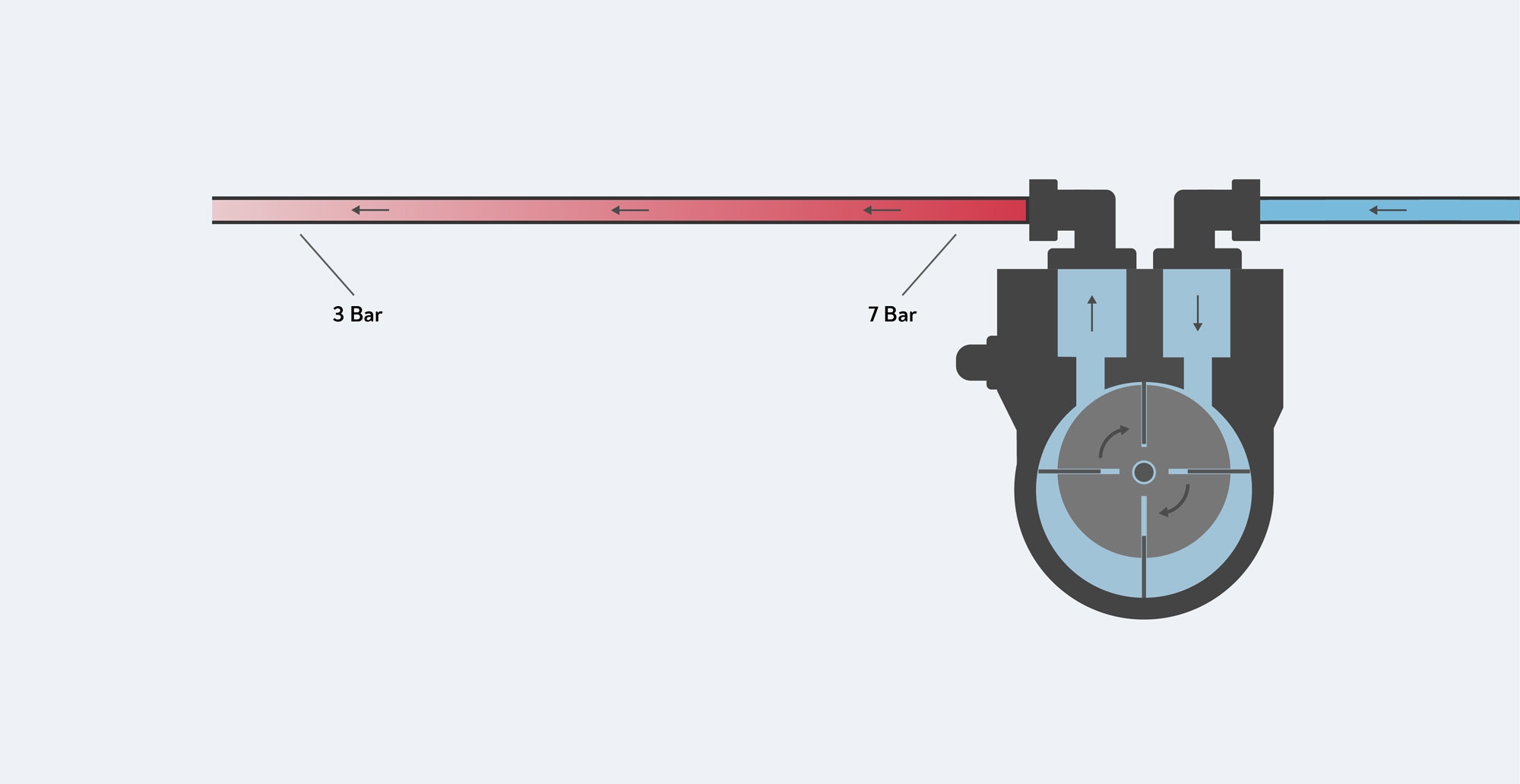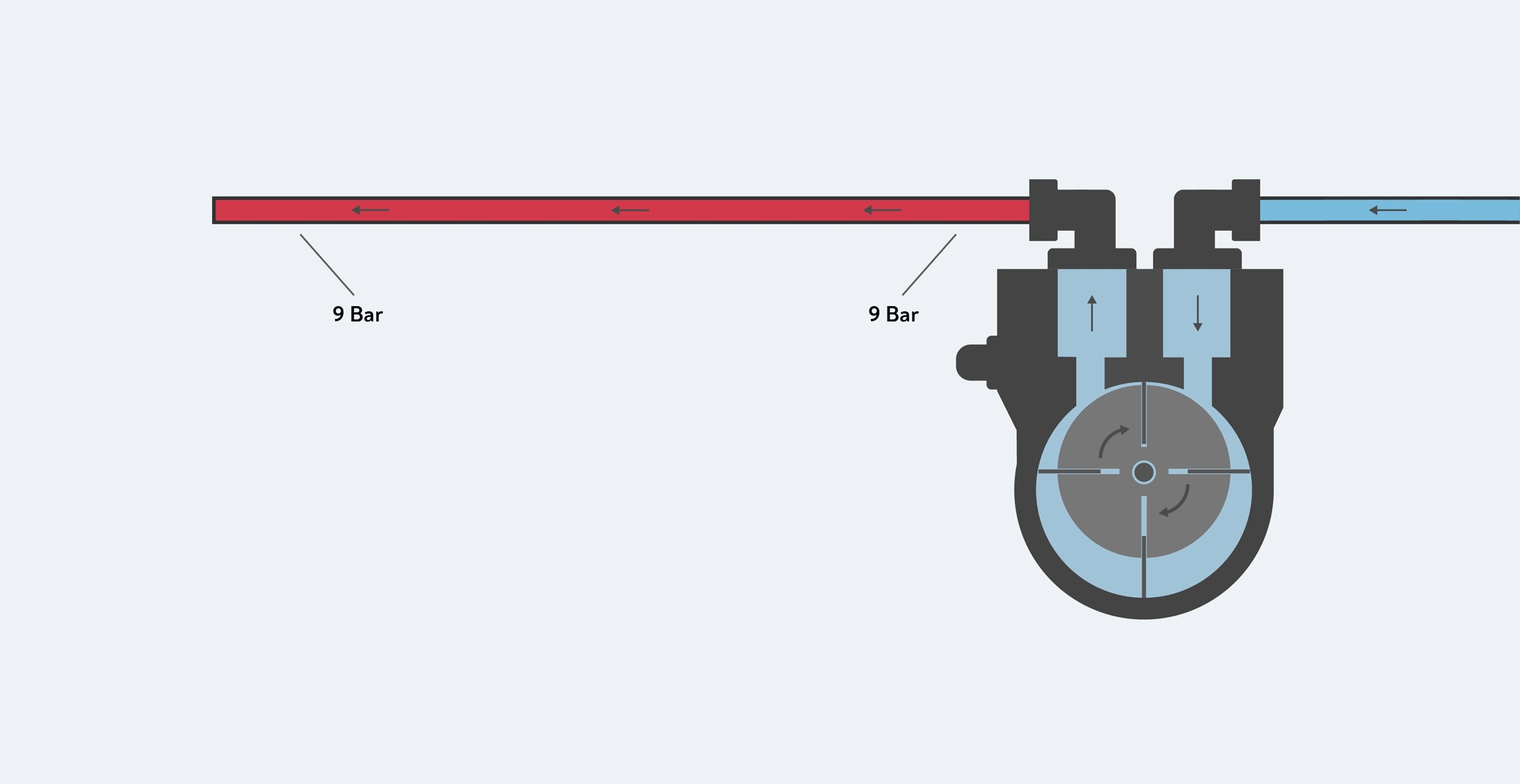As working baristas, we’re often used to thinking of pressure as a fixed input from the machine. When the pump is turned on, the machine’s pressure gauge shows us the pressure the pump produces, which is typically set somewhere around 9 bars.
The actual amount of pressure applied to the puck, however, is a different matter. To understand the discrepancy, we first need to understand the relationships among pressure, flow, and resistance.
The Pressure Drop
The first concept to understand is that flow through a tube depends not on the pressure, but on the change in pressure along its length — called the pressure drop. Water flows from an area of high pressure to an area of low pressure, so the pressure drop is necessary to create flow.
 Pressure drop and flow. In a sealed pipe (image above), the pump on the left generates 9 bars of pressure. The entire pipe reaches 9 bars of pressure, but no flow takes place because there is no pressure drop. When the pipe is opened (image below), the pressure at the exit is released and becomes the same as atmospheric pressure (0 bar). The pump still generates 9 bars of pressure, so the pressure drops along the length of the pipe, from 9 bars down to atmospheric pressure. Water flows from high pressure to low pressure.
Pressure drop and flow. In a sealed pipe (image above), the pump on the left generates 9 bars of pressure. The entire pipe reaches 9 bars of pressure, but no flow takes place because there is no pressure drop. When the pipe is opened (image below), the pressure at the exit is released and becomes the same as atmospheric pressure (0 bar). The pump still generates 9 bars of pressure, so the pressure drops along the length of the pipe, from 9 bars down to atmospheric pressure. Water flows from high pressure to low pressure.
In an espresso machine the water is pressurised at the pump, flows through the pipework in the machine to the puck, and exits from the puck out into the cup. For this flow to continue, a pressure drop must occur throughout the whole system. This means that the placement of the pressure gauge in the machine is important — if it is positioned close to the pump, the pressure will measure higher; if it is positioned close to the puck, the pressure will measure lower.
Most machines measure the pressure at some point along the middle: in the pipework.

